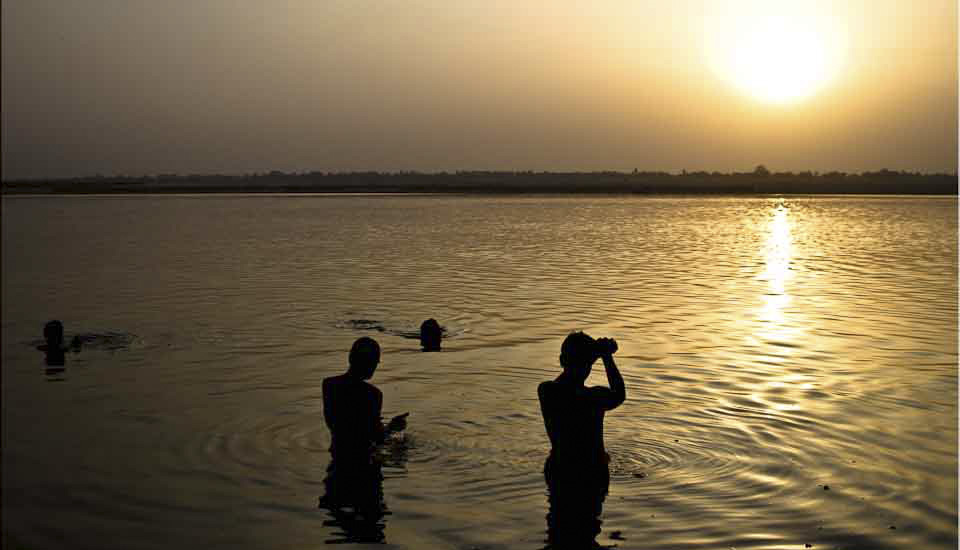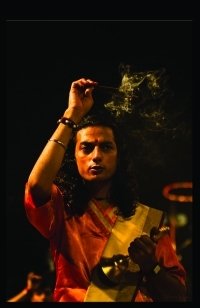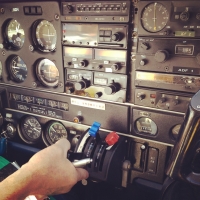.jpg)
Campsite in Wadi Rum
I’m not a morning person – but when you go to sleep in a Bedouin tent in the shadows of the towering red rocks of Wadi Rum, getting up early to explore is the only option!
Everyone I know who had ever visited Wadi Rum in the south of Jordan has come away awestruck.
As did I.
It is the most extraordinary landscape: steep sandstone cliffs rising tall and textured out of a flat sandy valley with colours changing every moment from warm yellows and rusty browns through to the more striking and dominant pinks and reds. Petroglyphs, inscriptions, and archaeological ruins give witness to 12,000 years of human occupation, and today the area is scattered with goat-hair tents, corrugated iron structures, and small villages of concrete houses. The 74,180 hectares (183,300 acres) of unique, UNESCO-World Heritage listed desert landforms comprising the Wadi Rum Protected Area (WRPA), is dotted with Bedouins, dressed in thoab – long flowing cotton robes, wearing red-and-white checkered keffiyeh scarves on their heads, and riding or leading their dromedary camels.
This was where British Army Colonel T. E. Lawrence – later known to the world as Lawrence of Arabia – was based during the First World War and the Arab Revolt of 1916–1918. The descriptions of this landscape in his book the Seven Pillars of Wisdom verge on poetry. The movie Lawrence of Arabia (1962) is drawn from that autobiographical book, and filmed in this very place. Who can forget those stunning visuals! The desert itself is alive with character. Remnants of Lawrence’s time here remain across the landscape – adding to the rich and complex history of the region.
Wadi Rum is one of Jordan’s most popular tourist attractions, and I was thrilled to be able to visit. Like many, I had been entranced by the desert as a child. I was mesmerised by the flowing sands and the expanses of space and sky depicted in the movie – which I was allowed to watch with my parents at a drive-in as a youngster when it first came out because were were learning about ‘Arabia’ in school. While I certainly didn’t understand the plot details or the subtleties of character, I was captivated enough to later read a biography of T. E. Lawrence’s life, and to watch the movie many more times.
I was travelling with a small group, and our base was one of the several semi-permanent tent and bubble-pod campsites nestled into the bottom of the escarpments and managed by the local Zalabieh Bedouins. The timing of my trip was exceptionally lucky: on the day of our arrival into the wadi – a valley, ravine, or channel that is dry except during heavy rains – we experienced a rain- and hail-shower, which made the red sands even more dramatic (see: Desert Rains and the Seven Pillars of Wisdom). Given that Wadi Rum receives only 14 days of rain each year, this was a real treat!
I was certainly looking forward to exploring further.
.jpg)
A Waning Gibbous Moon over Wadi Rum
When I peaked out of my tent at 0630 in the morning, an almost-full moon was still over the mountains opposite my campsite.
.jpg)
Morning over Wadi Rum
I climbed up the escarpment behind my tent and the autumn sky got lighter very quickly. Wet patches still sat on the sandy ground from the rains the afternoon before.

Rough Rocks in the Wadi
Wadi Rum is sometimes called the Valley of the Moon because of its rugged landscape. It has been the setting for a number of movies – especially for science fiction films purportedly set on Mars.

Personal Bubble
Accommodation domes inspired by The Martian – which was one of many movies filmed here – allow views of the surrounding mountains and the normally clear, starry night skies.

Camels Waiting
Dromedaries are so ubiquitous in this region …

Camels in the Wadi
… that they are commonly known as Arabian camels. These are waiting for tourists.

Smoke Break
The word bedouin comes from the Arabic badawī, meaning “desert dweller”. There are six Bedouin tribes that still live around here: many operate a variety of tourism ventures.

Desert Transport
The wadi seems to go on forever, and there are no set roads. Bedouin 4x4s are on hand to make their own tracks and ferry tourists around.

Bedouin Drivers
I couldn’t resist a quick picture of our drivers …

Camels in the Wadi
… when we arrived at another camp …

Camel Rides
… where camel wait and groups of tourists come and go.

Young Men in a Big Landscape
That sky! And, the dramatic mountains of the wadi stretch out forever.

Young Camel Handlers
The red keffiyeh scarf is traditional to many parts of the Southern Arabian Peninsula. It has historically been worn by Bedouins to represent the red of the Arabian deserts.

Tourists in the Wadi
Finally, it is our turn! It might be a bit kitsch and touristy, but I do love a camel ride. (iPhone6)

A Group of Riders in the Wadi
There is fair gap between us and the group of tourists in front of us.

Camel Tracks
It is actually not that easy handling bulky digital SLR cameras from camelback!

Morning Sun on the Sands
The colours change every minute in the shifting light. This landscape is so large, it dwarfs us all.

Coming into Town
After a short while, Wadi Rum Village comes into view in the distance.

Taking Camels Back to the Camps
As we approach the small town, other camels are led back into the protected area. In some spots, the granite rock shows through the sandstone cliffs.

Camels and Handler
I always find the hardest part of a camel ride is the dismount!

Camel Portrait
I get one last close up of my camel before getting back into the air-conditioned bus that has been waiting for us here, just outside the WRPA.

Wadi Rum Village

Train Engine
Our last stop before leaving this magnificent area was along the Ottoman-built Hejaz Railway, where a refurbished locomotive harks back to the origins of the modern Middle East: …

Inside Wadi Rum Railway Station
… the year was 1916, and T. E. Lawrence was assisting his Bedouin allies stage the Arab Revolt against the Ottoman Empire.

It was a sublime experience – taking me back to memories of childhood, and magical desert dreams.
No wonder everyone is in awe of this magnificent landscape!
Photos: 15October2019




























.jpg)

